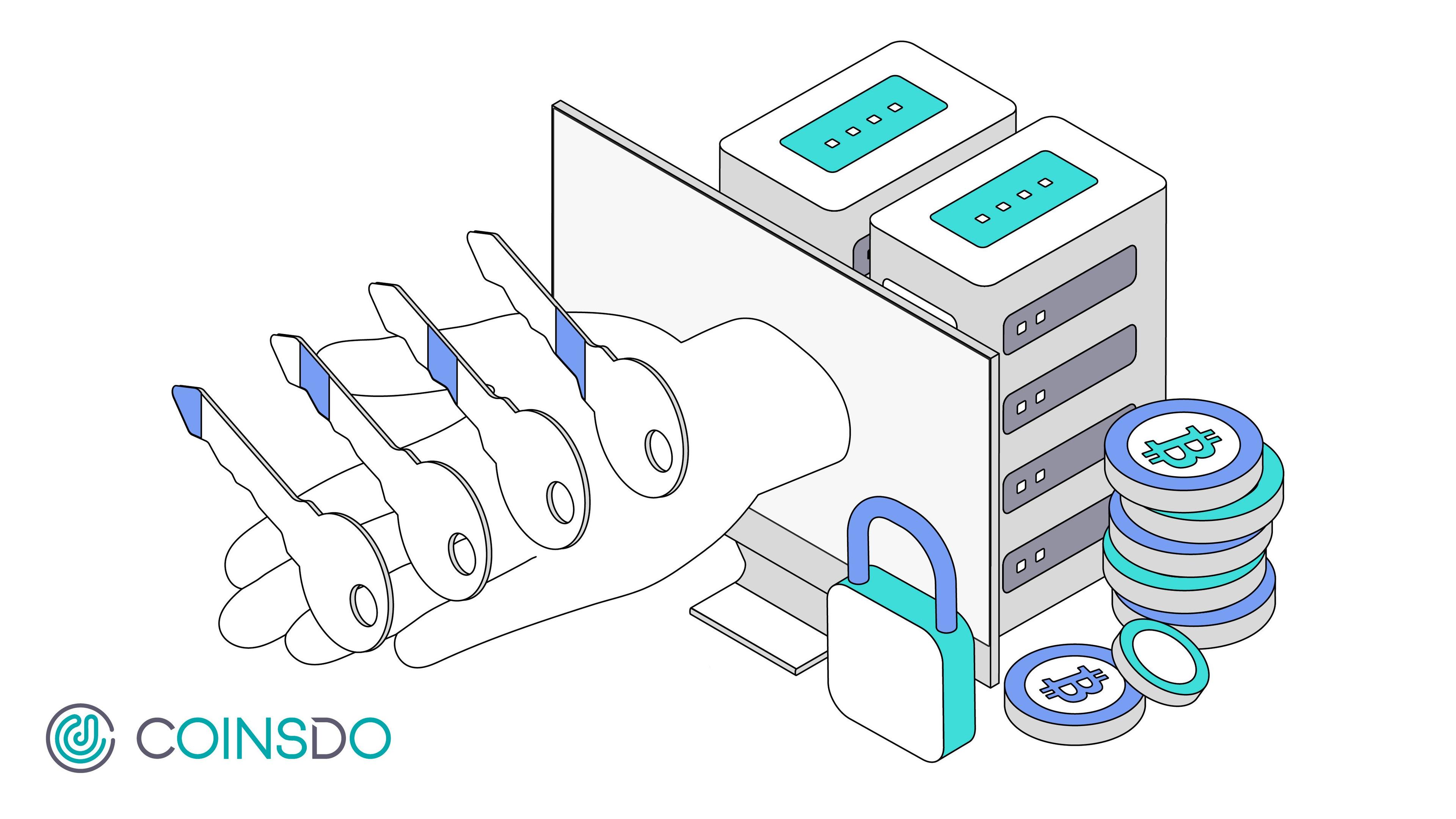
13 min read
What is Secure MPC? A Basic Guide
Secure Multi-Party Computation (MPC) is a cryptographic protocol that allows multiple parties to jointly compute a function over their private inputs while keeping those inputs confidential. This privacy-preserving computation method ensures that no single party gains access to another's data, making it a critical technology for enhancing data privacy and computational security in various fields, including finance, healthcare, and blockchain applications.
In this article, we'll explore the fundamentals of MPC, its applications, and how it contributes to secure data processing and cryptographic research.
The Origins of MPC
Think MPC is a cutting-edge novelty? Think again! This cryptographic powerhouse has been hiding in plain sight since the neon-soaked era of the 1980s. Long before the internet became a household staple and decades prior to the cryptocurrency boom, the foundational ideas of MPC were already taking shape in the minds of pioneering cryptographers.
The story begins with Andrew Yao, a name that may not ring as many bells as Steve Jobs or Bill Gates, but whose impact in the cryptographic community is just as profound. In the early 1980s, Yao posed a problem that would seem more at home in a high-stakes thriller than a computer science lab: How can two millionaires determine who is wealthier without revealing their actual fortunes to each other or anyone else? This wasn't just a theoretical exercise; it was a challenge that struck at the heart of privacy in computation.
Yao's work, which now seems almost prophetic, laid the groundwork for what we know as MPC today. Back then, the idea that multiple parties could jointly compute data without exposing their individual inputs was as radical as the concept of a personal computer was just a few years prior. In an age of big hair, arcade games, and the first mobile phones, MPC was a quiet revolution brewing in the background, setting the stage for the privacy-centric digital world we're navigating now.
Understanding Secure Multi-Party Computation (MPC)
At its core, secure MPC enables collaborative encryption and privacy-preserving computation without relying on a trusted third party. Instead, cryptographic techniques ensure that each participant contributes their input securely while only the final computed result is revealed.
Key Principles of MPC
- Privacy – Each party's input remains confidential throughout the computation.
- Correctness – The computation produces the correct result as if a trusted third party had performed it, without any manipulation.
- Fairness – No party can learn the result before others or force the computation to terminate unfairly.
- Independence of Inputs – Parties provide their inputs independently, without knowing the inputs of others.
How Does MPC Work?
MPC security is achieved through cryptographic engineering, leveraging techniques such as:
- Secret Sharing: Data is split into multiple "shares" distributed among participants. No individual share reveals anything, but collectively, they reconstruct the original input. Additive secret sharing is a common technique in MPC where data is divided into shares that sum to the original value when combined.
- Homomorphic Encryption: Allows computations on encrypted data without decrypting it. This ensures data confidentiality during processing.
- Garbled Circuits: Encrypts function evaluations so that no party can see the intermediate computations.
- Private Set Intersection (PSI): Enables two or more parties to compare datasets and find common values without revealing any additional information.
- Zero-Knowledge Proofs (ZKPs): A cryptographic method that allows one party to prove they know a value without revealing it. This is crucial for private key security and authentication.
- Universal Composability: A framework ensuring that an MPC protocol remains secure even when composed with other cryptographic protocols.
These methods contribute to distributed computing security, making MPC a cornerstone of modern privacy technologies.
Advantages of Secure Multi-Party Computation (MPC)
1. Enhanced Privacy Protection
MPC ensures that sensitive information remains private, even during joint computations. Unlike traditional methods, MPC does not require a centralized entity to collect and process data, significantly reducing exposure risks. This is particularly useful for:
- Data Analytics: Securely analyzing large datasets across multiple institutions while maintaining data confidentiality.
- Private Key Security: Protecting cryptographic keys by distributing their components among multiple parties, preventing any single point of failure.
2. Improved Efficiency in Decentralized Systems
Many blockchain applications and cryptography in blockchain projects are integrating MPC to ensure secure, decentralized computations.
- Goldreich-Micali-Wigderson Protocol (GMW): A foundational MPC protocol that enhances security in distributed computing environments.
- SPDZ (MPC-in-the-Head): A highly efficient MPC protocol used for real-world applications in secure data analytics and cloud computing.
3. Protection for Sensitive Data in Cloud & AI Applications
As businesses move toward cloud-based processing, MPC ensures that companies can leverage AI and big data analytics without compromising privacy.
- Homomorphic Encryption: A key component in secure AI models, allowing computations to be performed on encrypted data.
- Private Set Intersection (PSI): Enables privacy-preserving customer matching in marketing and fraud detection.
Applications of Secure Multi-Party Computation
The first practical implementation of MPC in the real world occurred in 2008. This was the year when MPC stepped out of academic papers and into the real world, marking its first practical implementation in an unexpectedly down-to-earth industry: sugar beet production.
Two competing sugar beet companies faced a common dilemma – how to determine the most efficient distribution of their crops without giving away sensitive company information. It was a classic case where revealing too much could lead to competitive disadvantage, yet collaboration was essential for optimal efficiency.
By employing an MPC protocol, these companies were able to jointly compute the optimal distribution plan while keeping their individual data under wraps. This wasn't just a win for the companies involved; it was a groundbreaking demonstration of MPC's practical utility.
This implementation was a pivotal moment, proving that MPC could bridge the gap between theoretical cryptography and real-world applications, and paving the way for its future use in various industries, such as:
1. Financial Services & Secure Data Processing
Banks and financial institutions use MPC cryptography to compute credit risk scores, anti-money laundering (AML) checks, and fraud detection models without exposing individual customer data. Secure MPC eliminates the need for centralized data storage, reducing the risk of data breaches.
2. Cryptography in Blockchain & MPC in Cryptocurrency
MPC is a game-changer for blockchain technology and cryptocurrency security. It allows decentralized exchanges (DEXs) to perform secure transactions and threshold cryptography, ensuring that private keys are never fully exposed in one place. This enhances data confidentiality in digital asset management.
A prime example of this technology in action is seen in solutions like CoinWallet by CoinsDo, an MPC-based wallet. CoinWallet leverages the power of MPC to offer enhanced security for digital asset management, embodying the very essence of what makes MPC so valuable in the crypto realm.
3. Healthcare & Privacy-Preserving Computation
Hospitals and research institutions can collaborate on cryptographic research involving sensitive patient data. For example, researchers from different institutions can compute statistics on medical records without directly sharing patient information.
4. Fraud Detection & Secure Protocol Design
By applying secure MPC, companies can detect fraudulent transactions across multiple financial institutions while preserving user anonymity. Secure protocol design ensures that only legitimate parties access critical information.
5. Advertising & Secure Data Collaboration
Tech giants and advertisers use MPC security to analyze user behavior across different platforms without sharing raw data. This helps comply with data regulations like GDPR while enabling targeted marketing strategies.
Challenges of Secure MPC
Despite its advantages, MPC cryptography faces challenges such as:
- Computational Overhead: MPC protocols can be slower than traditional computations due to complex cryptographic operations.
- Scalability Issues: As the number of participants increases, so does the complexity of the computation.
- Implementation Complexity: Deploying secure MPC requires expertise in encryption techniques and distributed computing security.
The Future of Secure MPC
As data privacy concerns grow, MPC cryptography is expected to become more widespread, especially in relation to quantum resistance.
As quantum computers threaten to render traditional encryption methods obsolete, breaking through them as easily as a hot knife through butter, MPC is evolving to meet this challenge head-on.
To understand how MPC can resist quantum computing, it's important to first recognize the threat posed by quantum computers.
Quantum computers, with their ability to perform complex calculations at unprecedented speeds, pose a significant threat to traditional cryptographic systems, especially those based on public-key cryptography. Algorithms like RSA and ECC (Elliptic Curve Cryptography), which are widely used for securing digital communications, could potentially be broken by quantum computers using algorithms like Shor’s algorithm.
MPC, however, operates differently:
No Reliance on Hard Mathematical Problems: Traditional cryptographic methods often rely on the computational difficulty of certain mathematical problems (like factoring large numbers, in the case of RSA). Quantum computers can solve these problems much more efficiently, rendering these methods vulnerable. MPC, on the other hand, doesn’t rely on such problems. Instead, it secures data by distributing computations across multiple parties, none of whom can access the entire dataset or computation.
Security Based on Secret Sharing: MPC often uses secret sharing schemes where the secret (like a cryptographic key) is divided into parts and distributed among participants. No single party has enough information to reveal the secret on their own. Quantum computers, despite their power, cannot easily reconstruct the secret without collating all the parts, which is a challenge if the MPC protocol is properly implemented.
Adaptability to Post-Quantum Cryptography: MPC protocols can be designed or adapted to incorporate post-quantum cryptographic algorithms. This means that the underlying cryptographic primitives used in MPC can be made resistant to quantum attacks, thereby securing the MPC process against quantum computers.
Conclusion
Secure Multi-Party Computation (MPC) is transforming how data is processed securely across industries. By ensuring data privacy, secure data processing, and computational security, MPC is paving the way for a future where organizations can collaborate without compromising confidentiality.
With advancements in cryptographic protocols, we can expect secure MPC to play a significant role in the evolution of privacy-preserving computation, blockchain security, and distributed computing security in the coming years.



